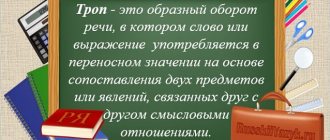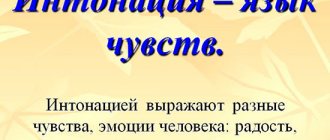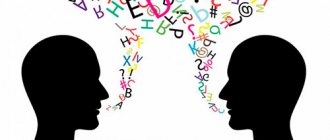When we talk about art and literary creativity, we are focused on the impressions that are created when reading. They are largely determined by the imagery of the work. In fiction and poetry, there are special techniques for enhancing expressiveness. A competent presentation, public speaking - they also need ways to construct expressive speech.
For the first time, the concept of rhetorical figures, figures of speech, appeared among the orators of ancient Greece. In particular, Aristotle and his followers were involved in their study and classification. Delving into the details, scientists have identified up to 200 varieties that enrich the language.
Means of expressive speech are divided according to language level into:
- phonetic;
- lexical;
- syntactic.
The use of phonetics is traditional for poetry. Musical sounds often predominate in a poem, giving poetic speech a special melodiousness. In the drawing of a verse, stress, rhythm and rhyme, and combinations of sounds are used for emphasis.
Means of artistic expression
Depending on the elements of the Russian language used, figurative and expressive means are divided into three types:
- phonetic, based on a certain selection of speech sounds;
- lexical, related to the meaning of the word;
- syntactic, based on the structure of syntactic constructions.
All three types, used in combination, increase the readability and fascination of the text, more fully reveal the author's intention, and make literary works multifaceted. A reader who is familiar with the use of expressive means, who knows how to recognize them and understand their meaning, is able to penetrate into this diversity and not miss the meaning of small details. For those unfamiliar with the allegorical expression of thoughts, fables will remain funny stories from the lives of animals. Those who do not catch the gradation will miss the increase in the emotion of the author or character. Anyone who understands the metaphor in its literal sense will doubt the reality of what is being described.
A competent reader, who can not only put letters into words, but also understand the possibilities of artistic use of the resulting words, becomes a co-author of the writer in creating images.
How to make text expressive?
To create an artistic image, you will need such means of expression as anaphora, epithet, parallelism, gradation. With their help, they create a multifaceted picture. As a rule, not one syntactic means of expressiveness is used, but several at once.
Phonetic means
The term phonetic comes from the Greek word φωνή, which means “sound.” We are not talking about any sound - the knocking of a hammer, the barking of a dog or the rustling of leaves are not included in the scope of interests of phonetics; it deals with the sounds of human speech. Accordingly, phonetic means of expressiveness are based on the perception of speech sounds - phonemes.
There are three main phonetic means of expression.
- Alliteration. It implies the use of the same type of consonant sounds in a limited passage of text (for example, within a quatrain).
The forest slumbers under the fairy tale of sleep. (S. Yesenin)
A variant of the technique is the use of words starting with the same letter - “Scandinavian alliteration”, which is especially popular in English-language literature. An example is, in particular, the characters of “Harry Potter” by J. Rowling, whose first and last names begin with the same letter (Severus Snape, Hermione Granger, etc.), or posters with public service announcements from “The End of a Chapter” by J. Galsworthy (“ The betting is a waste of thousands."
- Assonance. Using the same vowel sounds within a line, stanza, or sentence.
Breathing in perfumes and mists, she sits by the window. (A. Blok)
- Onomatopoeia. Transmission using phonetic means of sounds of the surrounding world - thunderclaps, the sound of horse hooves on cobblestones, the rustling of tires on the road or mice in the underground.
And the thunder roared continuously, and the winds raged in the wilds. (K. Ryleev)
The use of phonetic techniques is called sound writing, since with the help of the selection of phonemes in a literary work, a bright, “voiced” picture is drawn that stimulates the reader’s imagination.
What is allegory in literature
What are the trails?
Words that are used in a figurative meaning make the work bright and convey the main features of the image. Syntactic means of expressive speech are necessary in works to more deeply show an ongoing event or talk about a person.
Allegory is used in fables. To exaggerate the signs or action being performed, you need hyperbole. In the 19th century, writers satirically described the evils of society using the grotesque. When the true meaning of the transmitted information is hidden, it is disguised under ironic statements. In order to impart the properties of living things to inanimate beings, personification is needed.
Lexical means of expression
Lexical means include expressive means based on the use of the visual capabilities of a lexical unit - a word. Synonymy, antonymy, expression and other stylistic means that make up the palette of the Russian language belong to the so-called non-special ones, that is, in addition to artistic ones, they also play a purely utilitarian role in speech. Special ones, used exclusively for artistic purposes, are paths.
Trails
Tropes are based on the figurative meaning of words. The minimum number of distinguishable varieties of tropes is three: metaphor, metonymy and synecdoche. Moreover, for literary scholars who consider synecdoche to be a special case of metonymy, the list is compressed to two positions.
The list of tropes offered by traditional literary criticism contains the table below with examples.
| Term | Meaning | Examples |
| Metaphor | Transferring a name from one object to another based on similarity. | The speaker looked at the audience with a fiery gaze. |
| Metonymy | Transfer of names based on the contiguity of concepts. | The audience greeted the teacher's words with a roar of discontent. |
| Synecdoche | Quantitative transfer “part - whole” and “one - many”. | The German is by nature pedantic and law-abiding. I borrowed for that blue blouse. |
| Epithet | Figurative, artistic definition. | The newcomer looked at the crowd with an impudent, disdainful glance. |
| Allegory | Allegory, replacement with a concrete image, a symbol of an abstract concept. | The fox in fables is an allegorical image of cunning, the donkey is stupidity, the lion is royalty. |
| Hyperbola | Artistic exaggeration. | You can't move your son from his spot even with a tank. |
| Grotesque | Exaggeration to fantastic limits. | Igor, on a bet, will walk to the Moon and return back. |
| Litotes | Understatement, the reverse of hyperbole. | The voice is thinner than a mosquito's squeak, but aims at the singer. |
| Personification | Giving inanimate objects the properties of animate ones. | The river slowly crosses the plain, carrying fishing boats on its ridge. |
| Irony | Expressing subtle ridicule by using concepts in the opposite sense. | Say something else just as smart. |
| Periphrase | Replacing the name with a description. | Thanks to the dedication of people in white coats, the patient’s life was saved. |
Figures of speech
Stylistic devices based on a word, but not using its figurative meaning, are called figures of speech. These include.
What is parcellation in Russian?
| Term | Meaning | Examples |
| Anaphora | The same beginning of sentences or lines of poetry. | The Internet is evil. The Internet completely knocks a person out of real life. We will not connect the Internet. |
| Antithesis | Contrast at the level of words, sentences, text passages. | The more often the teacher snapped and raised his voice at the children, the less often they reacted to the raised tone. |
| Gradation | Arrangement of synonymous concepts in order of strengthening or weakening of meaning. | Night came, and a heavy, heavy, unbearable melancholy fell on Anna. |
| Lexical repetition | The deliberate use of the same word several times in a text to enhance its meaning. | There are pine trees everywhere, pine trees, pine trees on the right and left, both in front and behind, and it seems there is no way out of this endless kingdom of pine trees. |
| Oxymoron | Combining incompatible concepts into one phrase. | How to survive this bitter sweetness of farewell? |
| Comparison | Clarification of a concept by comparing it with others. | Shining like a polished copper samovar, the author of the play accepted congratulations from the actors and spectators on the successful premiere. |
| Epiphora | A figure opposite to anaphor: identical words do not begin, but complete a phrase or line. | This behavior speaks of bad manners. The most ordinary bad manners. The scourge of our time is bad manners. |
A number of figures of speech include those based not only on lexical units, but also on syntactic ones, using not the meaning of the word, but the structure of the sentence.
| Term and meaning | Examples |
| Inversion, or violation of direct word order: placing the subject after the predicate, definitions after the word being defined, etc. | The north wind blew and howled. |
| Rhetorical questions, exclamations and appeals, directed in form to the reader or interlocutor, but not requiring an answer. | How long are you going to test the patience of management? |
| Syntactic parallelism, which is sentences of similar construction. | If you go straight, you will end up in a vacant lot. If you go right, you will end up on the boulevard. If you go left, you will fall into a hatch. |
| Silence is a statement that is suddenly cut off, leaving the reader or interlocutor to independently think out the unsaid. | If you see Maria, tell her... But, okay, forget it. |
| Ellipsis. Adds dynamism to the statement by releasing individual words that are easily reconstructed from the context. | Granddaughter for grandma, grandma for grandpa, grandpa for the turnip... |
Visual possibilities of vocabulary
To achieve expressiveness of the text, words belonging to different lexical groups are used.
| Term | Meaning | Examples |
| Synonyms | Words with meanings that either coincide or have nuanced differences. | spring, spring, source |
| Contextual synonyms | Words that have a similar meaning within the context in which they are used. | In V. Bianchi’s story about a bear pulling a sliver of wood sticking out of a stump and listening to the sound made by the vibrating sliver, the name musician acts as a contextual synonym for the word bear, since it was the animal that was engaged in “musical exercises.” |
| Antonyms | Those with the opposite meaning also have a contextual variety. | hot – cold, summer – winter |
| Homonyms | Completely identical in spelling and pronunciation, but with unrelated meanings | electrical socket and socket – jam saucer |
| Homographs | They coincide only in the written version, but are different in pronunciation. | atlas - atlas |
| Paronyms | Cognates that have different meanings but look and sound similar | addressee - addressee |
Metaphor - what is it, examples, types
Also, the visual possibilities of vocabulary include:
- Words used by representatives of social, professional and other groups: professionalisms, terms, jargon, dialectisms.
- Book vocabulary, which has a solemn character, and rough vernacular.
- Outdated words and neologisms.
- Borrowed words.
- Phraseologisms.
Expressive-emotional vocabulary
The use of expressive-emotional vocabulary affects the listener or reader, causing the emotions necessary for the author: empathy, rejection, condemnation, delight, etc. Speech etiquette does not approve of expressive expressions in excess, but as a speech characteristic of a literary character or a way of influencing the reader, they are justified myself. Expressive-emotional vocabulary includes:
- Colloquial vocabulary that has a reduced stylistic and increased emotional connotation compared to neutral ones (nervous, squeaky).
- Words of increased emotional coloring with a positive or negative connotation (delightful, disgusting).
- Words containing suffixes with the meaning of emotional evaluation (ant, girl, little man).
Figures of speech
Stylistic figures are also used in literature. Their main types are shown in the table:
| Repeat | At the beginning, end, at the junction of sentences | This cry and the lines, these flocks, these birds |
| Antithesis | Opposition. Antonyms are often used. | Long hair, short mind |
| Gradation | Arrangement of synonyms in increasing or decreasing order | Smolder, burn, glow, explode |
| Oxymoron | Connecting contradictions | A living corpse, an honest thief. |
| Inversion | Word order changes | He came late (He came late). |
| Parallelism | Comparison in the form of juxtaposition | The wind stirred the dark branches. Fear stirred in him again. |
| Ellipsis | Omitting an implied word | By the hat and out the door (he grabbed it and went out). |
| Parcellation | Dividing a single sentence into separate ones | And I think again. About you. |
| Multi-Union | Connecting through repeating conjunctions | And me, and you, and all of us together |
| Asyndeton | Elimination of unions | You, me, he, she – together the whole country. |
| Rhetorical exclamation, question, appeal. | Used to enhance feelings | What a summer! Who if not us? Listen, country! |
| Default | Interruption of speech based on a guess, to reproduce strong excitement | My poor brother...execution...Tomorrow at dawn! |
| Emotional-evaluative vocabulary | Words expressing attitude, as well as direct assessment of the author | Henchman, dove, dunce, sycophant. |










